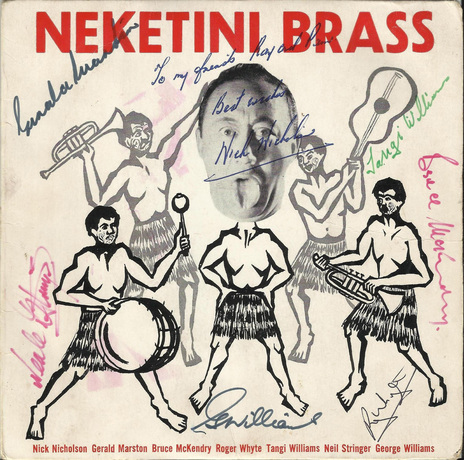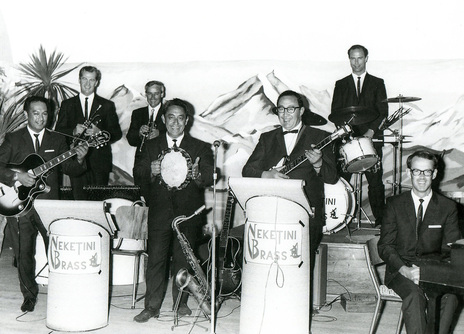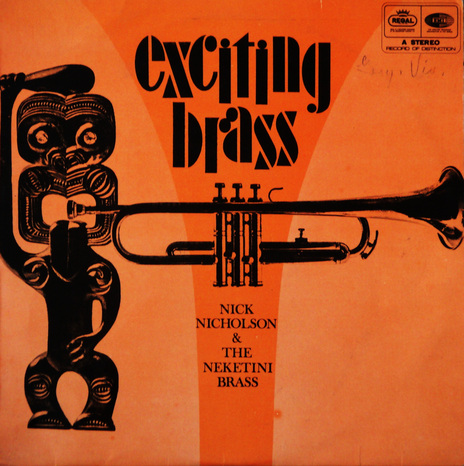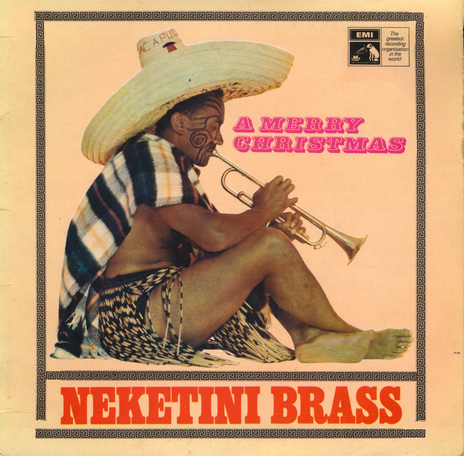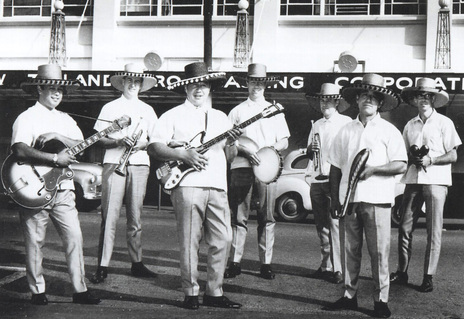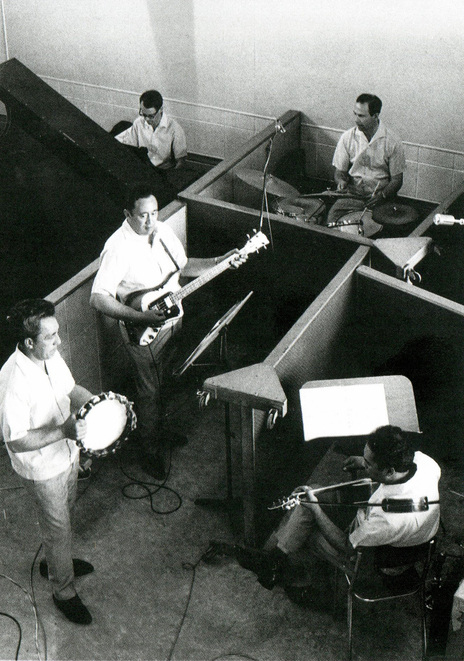Popular in cabarets and on radio, they recorded a hit album for HMV that reached even more suburban homes when released on the World Record Club label. In lesser hands, The Neketini Brass would have merely been a novelty act. But Nicholson’s arrangements were savvy and witty, and his band of merry jazzers could swing.
Soon after the release of their HMV album, their sound was being copied by other cabaret bands around the country.
Nicholson was born near Otaki in 1927. Both his parents were musical and passed this on to their children, who formed a family band to play at parties around Horowhenua. Nicholson took up the guitar, and was aged just five when he played on his first live broadcast. His father, a steel guitarist, hosted a show for 2ZO – a private station based in Palmerston North – and told his son he had to play rhythm.
Towards the end of World War II, Nicholson joined the Māori Battalion, but he didn’t get the chance to serve overseas. While training at the Trentham Military Camp he met many Māori musicians and was impressed by their skill at playing big band hits using stock arrangements. Nicholson spent 10 years in the RNZAF, and joined its brass band while based at Ohakea. “We used to march around with about 10 or 12 drummers marching in front,” he recalled to broadcaster Jim Sutton. “We did the opening of Parliament, goodness knows what.” He always credited his stint in the RNZAF band for giving him the chance to learn to read music. This gave him an opening in the Manawatu and Horowhenua dance bands.
In the late 1950s, Nicholson moved to Christchurch to live with his cousin, the bandleader Martin Winiata, who was famous for his long residency at the Union Rowing Club cabaret, and his ability to play two saxophones at once. He began playing guitar and saxophone with Winiata’s band, and one who was immediately impressed by him was saxophonist Stu Buchanan. “I remember Nick arriving in Christchurch, and I was very taken by his playing,” Buchanan recalled. “I was amazed at the incredible musical ability who had just arrived from Levin. I couldn’t believe it.” Nicholson was soon in demand for gigs with top-level players such as Doug Caldwell, George Campbell, Harry Voice and Buchanan.
The best-known tune is ‘Po Atarau’ (‘Now is the Hour’), in which the tempo is doubled to turn the mournful farewell song into a cheerful party goodbye.
Nicholson formed The Neketini Brass in 1967. He mostly played bass, with players such as Gerald Marston and Bruce McKendry on trumpets, Roger Whyte on piano, Tangi Williams on guitar, Neil Stringer on drums, and George Williams on percussion. “I heard the Tijuana Brass and suddenly thought that the sound could be applied to Maori and New Zealand tunes,” Nicholson told the Press in 1968. “I don’t know what the Mexicans will think of this version of their traditional instrumentation.”
While “traditional” generously describes the authenticity of the Tijuana Brass, Nicholson listened assiduously to their albums to write his own arrangements in their style – barping brass, pitched a little sharp. “Our sound has been labelled Tijuana because we use two trumpets,” said Nicholson. “But Herb Alpert also uses a trombone and a marimba. We use the trumpets but put the emphasis on rhythm.”
The Neketini Brass began a long residency at the Hei Hei Country Club near Christchurch in February 1967, and quickly became a drawcard for their good-humoured, irresistible dance music. Soon after the release of their HMV album, their sound was being copied by other cabaret bands around the country. Nicholson was chuffed: “It is good to see Christchurch beginning something new for a change,” he said. “This centre usually picks up the strain about six months after Auckland discovers it.”
The Neketini Brass recorded two singles, two EPs including a Christmas EP, and an album. Using arrangements by Nicholson, and produced by the veteran bandleader Don Richardson, the self-titled album was apparently one of the first stereo recording sessions at HMV’s Wellington studio. (When reissued on the budget label Regal, the Neketini Brass album was renamed Exciting Brass.)
Dominating the album were Māori favourites such as ‘Po Atarau’ (‘Now is the Hour’), ‘Mehe Manurere’, ‘Haere Mai’, ‘Hine E Hine’ and ‘Pokarekare Ana’. But Nicholson also wrote a couple of stunning originals. ‘Tararua Tramp’ is an atmospheric, Henry Mancini-style instrumental that walks the listener through the bush of the Tararua ranges, and features native bird calls that pan from speaker to speaker. The other original, ‘Neketini Mambo’, is a combination of Latin-American rhythms and Māori rhythms. The song ‘Karu’ was a South African tune allegedly brought back to New Zealand by Māori who had fought in the Boer War.
The best-known tune is ‘Po Atarau’ (‘Now is the Hour’), in which the tempo is doubled to turn the mournful farewell song into a cheerful party goodbye. Marston and McKendry are let loose for a trumpet break that swings.
In his unpublished memoir, Nicholson described The Neketini Brass as “a musical platform where I could once again play some of our Māori tunes on [radio] – these traditional melodies only heard among our people – this was my aim. To undertake something of that nature meant I was committed to writing arrangements continuously night and day. But as our repertoire increased, so did our playing skills and our trump card was enthusiasm … the hidden ingredient of all musicians who enjoy their music.”
The Neketini Brass idea was perfectly timed, and the perennial popularity of the Māori songs was shown in 2011 when Fat Freddy’s member Joe Lindsay arranged them to ska rhythms for the album Sing Along With The Yoots.
–
Peter McLennan investigates the strange connection between the Neketini Brass and Nigerian legend Fela Kuti.
